Over 20 years manufacturing experience of Road marking machine and road marking removal machine.
sales@lxdmarking.com+86 15805293662
Paint Striping Techniques Made Easier with the Right Equipment
paint striping techniques made easier with the right equipment: A comprehensive guide
Paint striping is a popular technique used to create visually appealing designs on fences, gates, signs, and other surfaces. While it can be a fun DIY project, it requires the right tools and techniques to achieve professional results. In this guide, we’ll explore the importance of the right equipment, the basics of paint striping, essential tools, practical tips, and why investing in quality equipment is key to success.
Paint striping can be challenging without the right equipment. Tools like brushes, rollers, and sprayers play a crucial role in achieving the desired pattern and texture. Without the proper equipment, paint striping can lead to uneven lines, poor adhesion, and an unsatisfactory finish. This section will highlight the challenges of striping without professional tools and how specialized equipment can make the process easier and more efficient.
Understanding the Basics: What is Paint Striping?
Paint striping is a technique used to paint decorative patterns on flat surfaces. It involves creating thin, evenly spaced lines of paint to form a specific design. Common uses include fences, gates, and signs. Different types of striping patterns, such as chevrons, zigzags, and chequers, offer varying aesthetic and functional benefits. This section will provide a clear definition of paint striping, its common applications, and an explanation of the different types of striping patterns.
The Role of Equipment in Professional Results
The right equipment is essential for achieving professional results in paint striping. Brushes, rollers, masking tape, and sprayers are all crucial tools that contribute to the quality of the final product. This section will provide an overview of essential paint striping equipment, explaining how each piece of equipment affects the striping process and outcome. Tips for selecting the right tools based on specific project requirements will also be included.
Practical Tips for Effective Paint Striping
Achieving a professional-looking paint striping project requires careful preparation and execution. This section will provide step-by-step guidance on preparing surfaces, techniques for achieving accurate and consistent lines, and common mistakes to avoid. Best practices for maintaining the quality of striping over time will also be discussed.
Comparative Analysis: Why Invest in Quality Equipment?
Professional-grade tools offer significant advantages over DIY equipment. This section will compare the performance, durability, and efficiency of high-quality tools versus DIY options. Case studies of projects where proper equipment made a significant difference will be included, as well as insights into the long-term cost-effectiveness of investing in quality tools.
Choosing the Right Paint Striping Equipment: A Buyer's Guide
Selecting the right equipment requires considering key features such as brush quality, tape adhesion, and sprayer precision. This section will guide readers through the features to look for when selecting equipment, as well as reviews of popular brands and models. Budgeting advice for paint striping equipment will also be provided, balancing cost with performance needs.
Embracing Professional Paint Striping Techniques
In conclusion, the right equipment is essential for achieving professional results in paint striping. By investing in quality tools, readers can overcome challenges and create stunning designs. This section will recap the importance of equipment, encourage readers to make informed purchases, and offer final thoughts on mastering paint striping techniques.
By following this guide, you can enhance your paint striping projects with the right tools, ensuring professional-quality results and success in both DIY and commercial applications.

